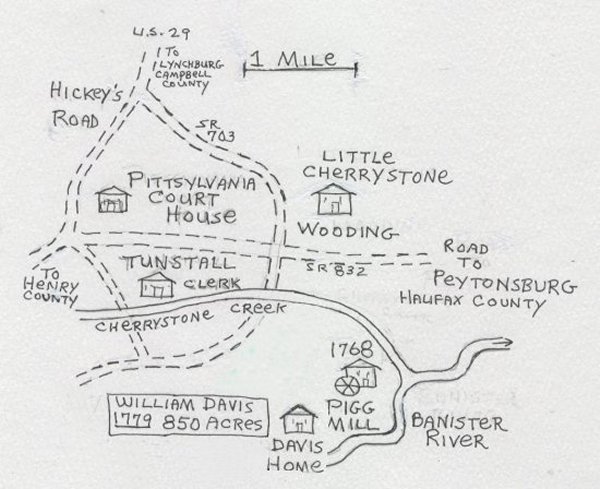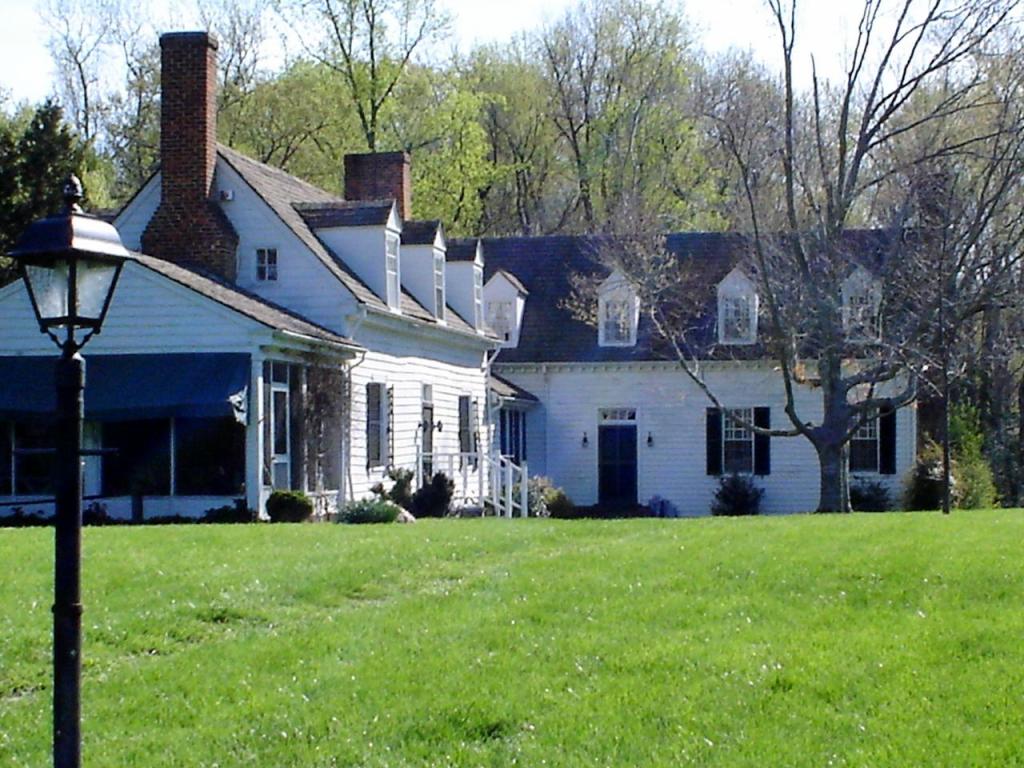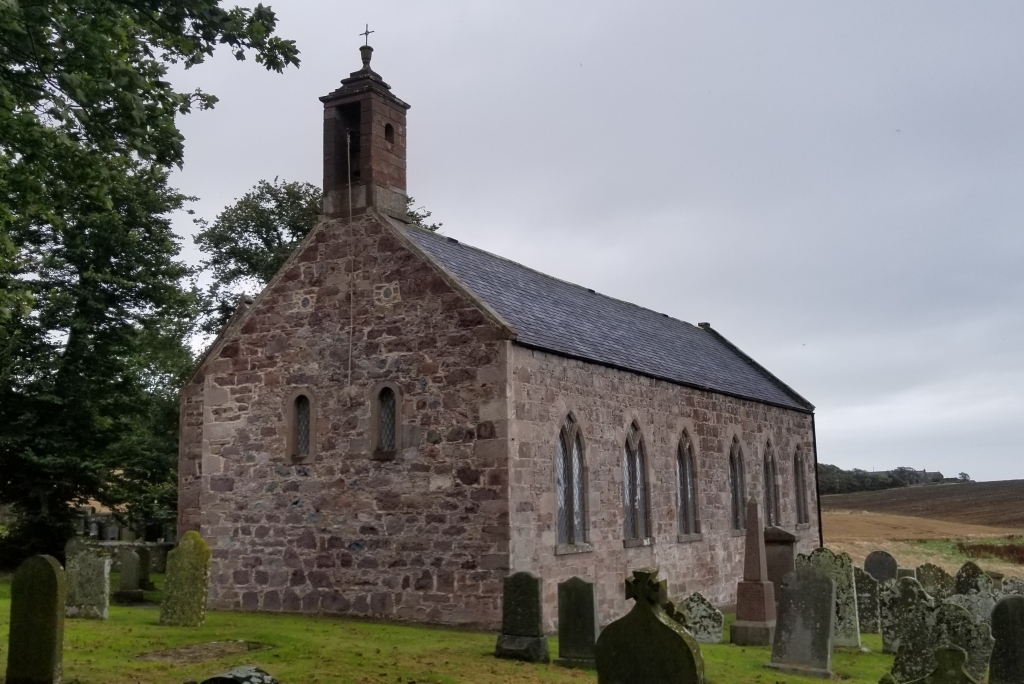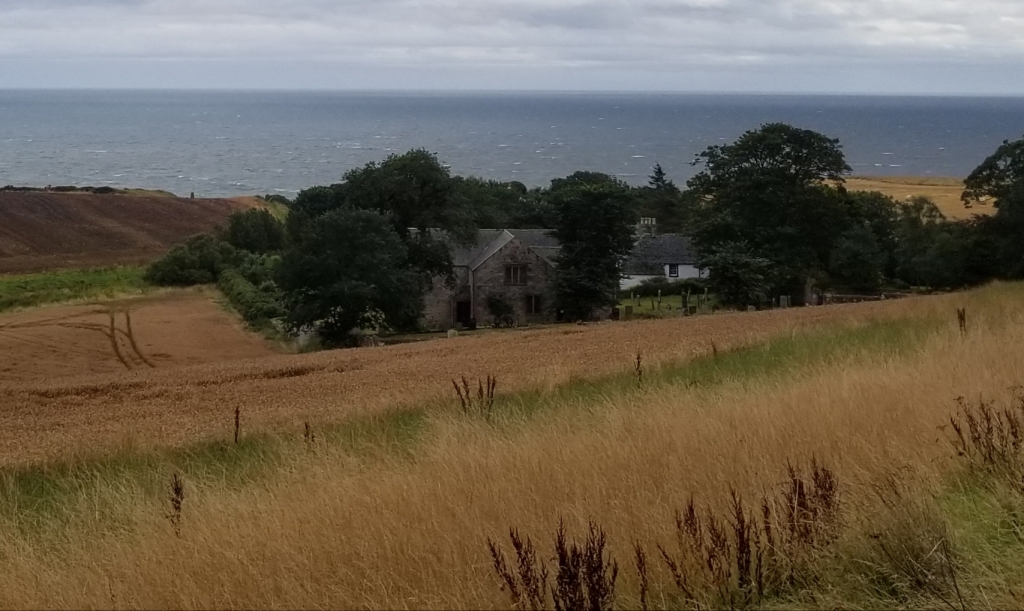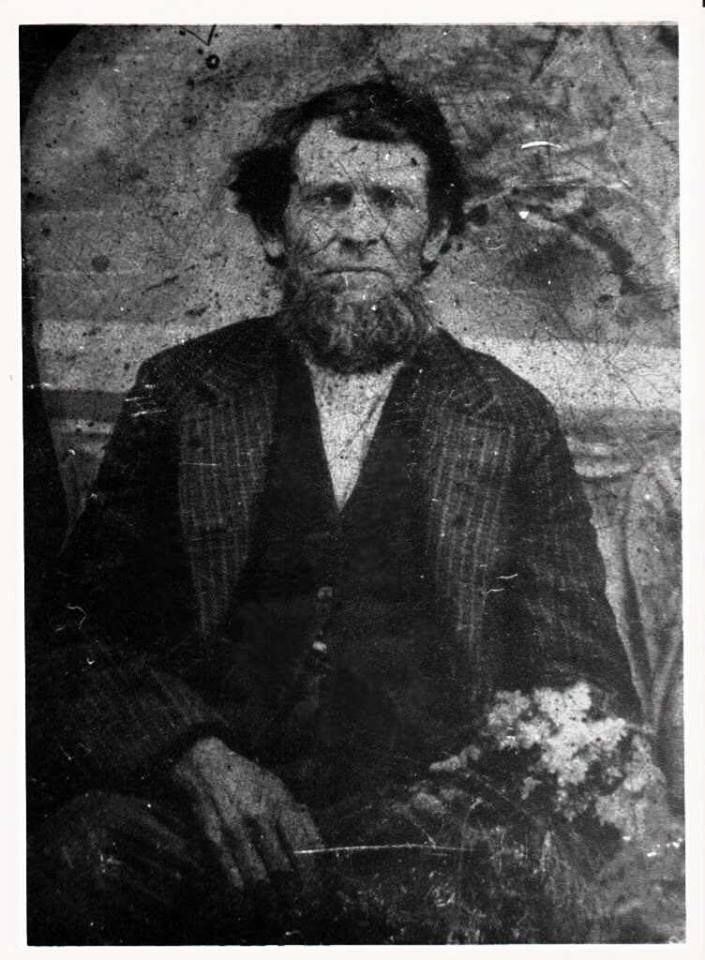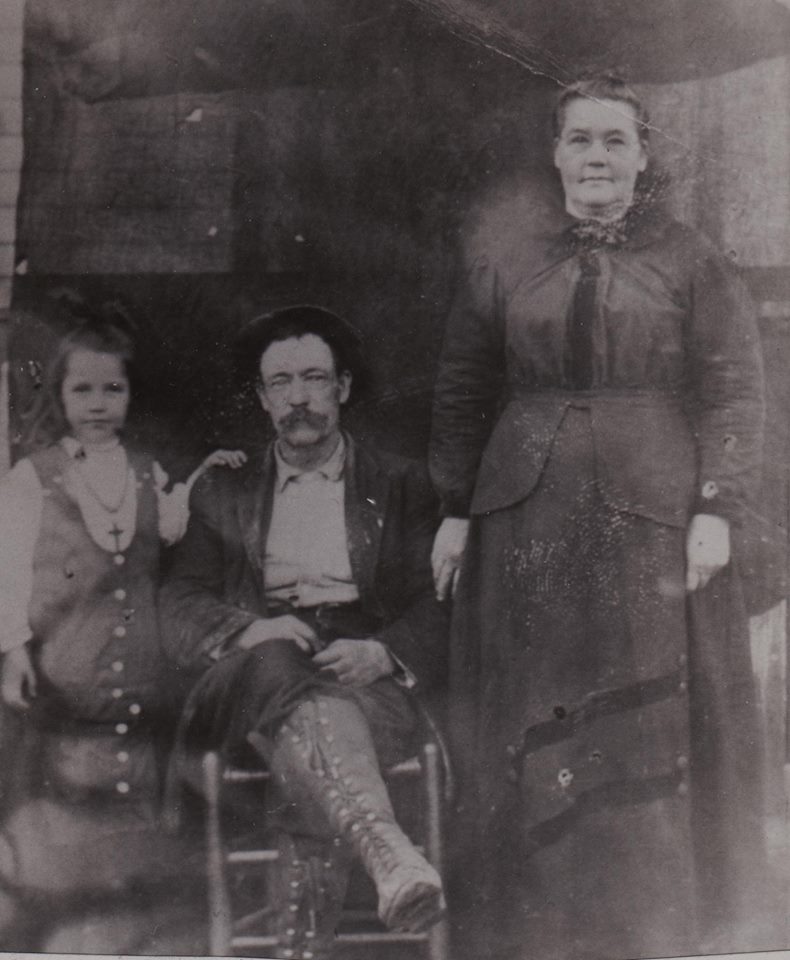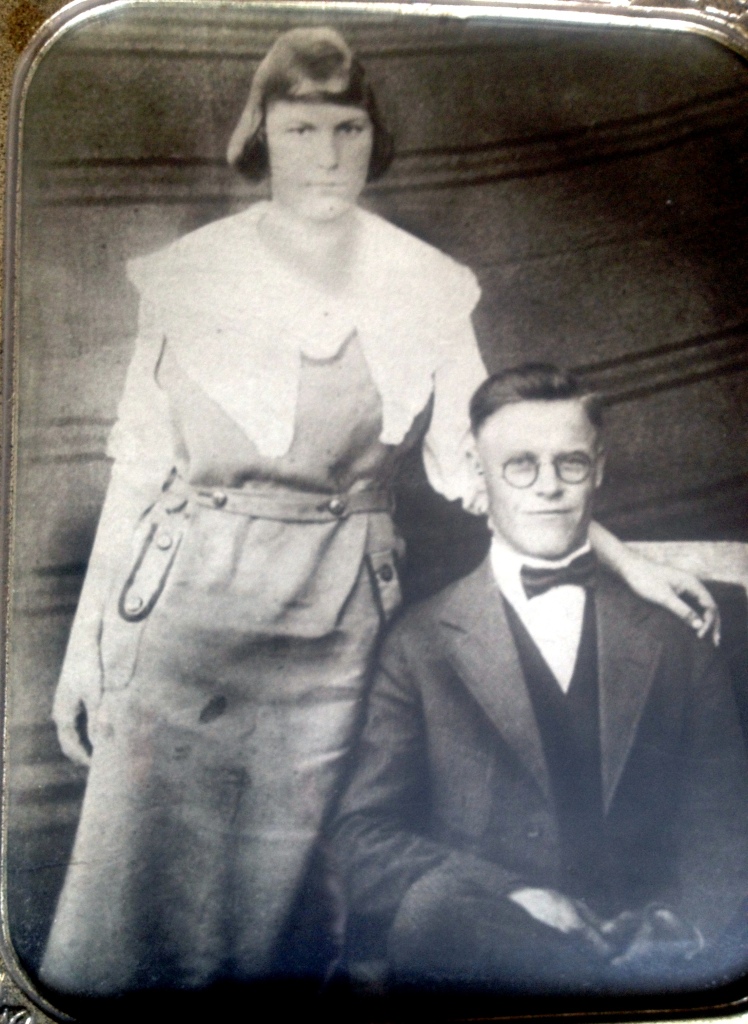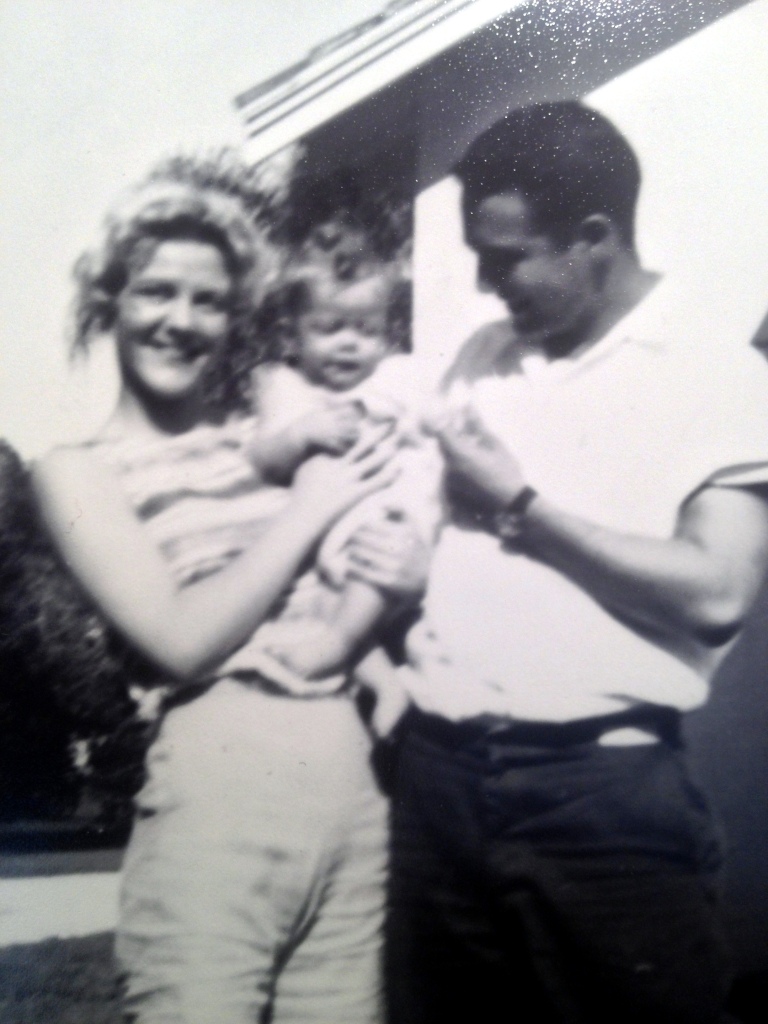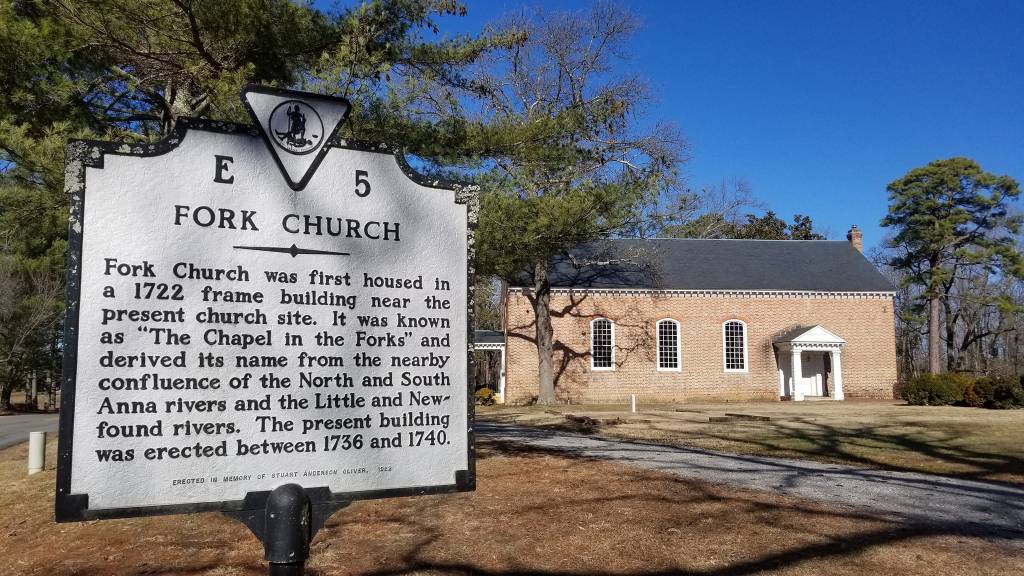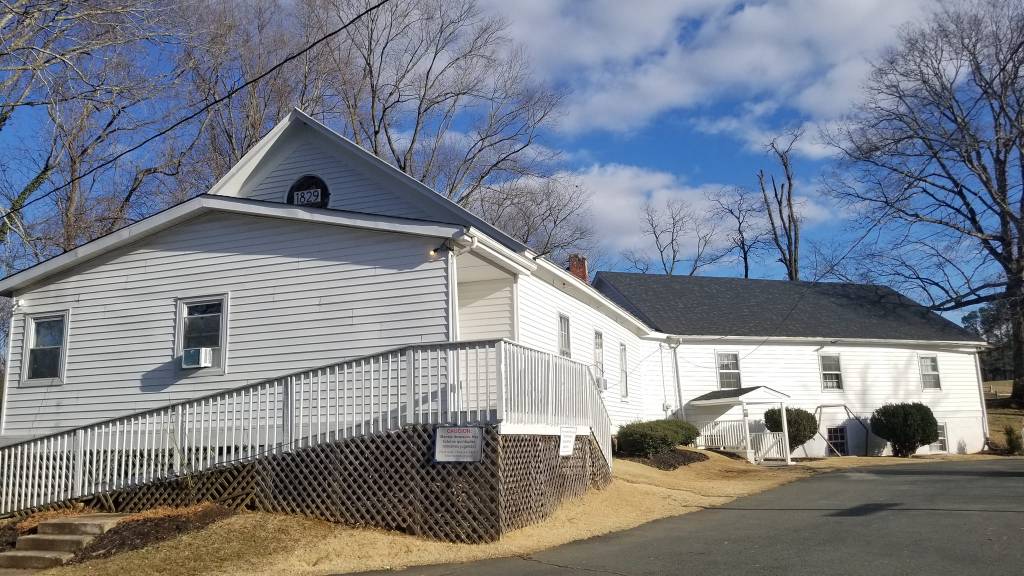Our story begins with Hubbard Ferrell, a captain in the royal militia at Jamestown, Virginia, who was killed during Bacon’s Rebellion.
According to traditional account and secondary sources, Hubbard was born in Longford-Westmeath, Ireland in 1645. I have seen no primary source evidence for that. (And by the way, as is usually the case with 17th century spellings, his name is not consistently rendered. I have seen Herbert, Hubert, and Huberd, and I have seen Ferrell, Farrel, and Ferrill. His many descendants named Hubbard Ferrell cause me to favor that rendition.)
In Jamestown in 1668 Hubbard married Dorothy Drew, daughter of Colonel Thomas Drew of Charles City County and over the next four years the couple had two sons, William and Brian. (Dorothy was born in Exeter, Devonshire, England. For more on her and her family, see the Drew post.)
Hubbard was a captain in the royal militia under the command of Governor William Berkeley. He appears in the historical record in 1674, when Robert Wynne, a member of the House of Burgesses and speaker of the house filed a petition with the governor, protesting his arrest by Captain Ferrell:
“To the right honorable Sir William Berkeley, King’s Governor and Captain General of Virginia. And to the honorable Council of State. The humble petition of Colonel Robert Wynne. Sheweth. That Captain Huberd Farrell hath caused your petitioner to be arrested to this honorable court and to make his appearance the first day hereof but hath not entered his declaration as by Act of Assembly is injoyned. Wherefore your petitioner humbly prayes a Non Suite against the said Huberd Farrell, with costs and damages according to law. And your petitioner shall pray etc.
Endorsed.
Colonel Robert Wynne versus Captain Hubert Farrell.
The circumstances of the arrest and protest are unknown (to me, at least). The next mention of Hubbard in the historical record is in Nathaniel Bacon’s July 30, 1676 proclamation. Hubbard is among the 22 persons identified by Bacon as Governor Berkeley’s “wicked and pernicious councilors, confederates, aiders, and assisters against the commonalty in these our civil commotions,” and as “as traitors to the King and country.” Bacon demanded that Berkeley, Hubbard Ferrell, and the others surrender themselves to him within four days and declared any who sheltered them to be criminals. Here is the full text of Bacon’s proclamation:
1. For having, upon specious pretenses of public works, raised great unjust taxes upon the commonalty for the advancement of private favorites and other sinister ends, but no visible effects in any measure adequate; for not having, during this long time of his government, in any measure advanced this hopeful colony either by fortifications, towns, or trade.
2. For having abused and rendered contemptible the magistrates of justice by advancing to places of judicature scandalous and ignorant favorites.
3. For having wronged his Majesty’s prerogative and interest by assuming monopoly of the beaver trade and for having in it unjust gain betrayed and sold his Majesty’s country and the lives of his loyal subjects to the barbarous heathen.
4. For having protected, favored, and emboldened the Indians against his Majesty’s loyal subjects, never contriving, requiring, or appointing any due or proper means of satisfaction for their many invasions, robberies, and murders committed upon us.
5. For having, when the army of English was just upon the track of those Indians, who now in all places burn, spoil, murder and when we might with ease have destroyed them who then were in open hostility, for then having expressly countermanded and sent back our army by passing his word for the peaceable demeanor of the said Indians, who immediately prosecuted their evil intentions, committing horrid murders and robberies in all places, being protected by the said engagement and word past of him the said Sir William Berkeley, having ruined and laid desolate a great part of his Majesty’s country, and have now drawn themselves into such obscure and remote places and are by their success so emboldened and confirmed by their confederacy so strengthened that the cries of blood are in all places, and the terror and consternation of the people so great, are now become not only difficult but a very formidable enemy who might at first with ease have been destroyed.
6. And lately, when, upon the loud outcries of blood, the assembly had, with all care, raised and framed an army for the preventing of further mischief and safeguard of this his Majesty’s colony.
7. For having, with only the privacy of some few favorites without acquainting the people, only by the alteration of a figure, forged a commission, by we know not what hand, not only without but even against the consent of the people, for the raising and effecting civil war and destruction, which being happily and without bloodshed prevented; for having the second time attempted the same, thereby calling down our forces from the defense of the frontiers and most weakly exposed places.
8. For the prevention of civil mischief and ruin amongst ourselves while the barbarous enemy in all places did invade, murder, and spoil us, his Majesty’s most faithful subjects.
Of this and the aforesaid articles we accuse Sir William Berkeley as guilty of each and every one of the same, and as one who has traitorously attempted, violated, and injured his Majesty’s interest here by a loss of a great part of this his colony and many of his faithful loyal subjects by him betrayed and in a barbarous and shameful manner exposed to the incursions and murder of the heathen. And we do further declare these the ensuing persons in this list to have been his wicked and pernicious councilors, confederates, aiders, and assisters against the commonalty in these our civil commotions.
Sir Henry Chichley William Claiburne Junior
Lieut. Coll. Christopher Wormeley Thomas Hawkins
William Sherwood Phillip Ludwell
John Page Clerke Robert Beverley
John Cluffe Clerke Richard Lee
John West Thomas Ballard
Hubert Farrell William Cole
Thomas Reade Richard Whitacre
Matthew Kempe Nicholas Spencer
Joseph Bridger John West
Hubert Farrell Thomas Reade
And we do further demand that the said Sir William Berkeley with all the persons in this list be forthwith delivered up or surrender themselves within four days after the notice hereof, or otherwise we declare as follows.
That in whatsoever place, house, or ship, any of the said persons shall reside, be hid, or protected, we declare the owners, masters, or inhabitants of the said places to be confederates and traitors to the people and the estates of them is also of all the aforesaid persons to be confiscated. And this we, the commons of Virginia, do declare, desiring a firm union amongst ourselves that we may jointly and with one accord defend ourselves against the common enemy. And let not the faults of the guilty be the reproach of the innocent, or the faults or crimes of the oppressors divide and separate us who have suffered by their oppressions.
These are, therefore, in his Majesty’s name, to command you forthwith to seize the persons above mentioned as traitors to the King and country and them to bring to Middle Plantation and there to secure them until further order, and, in case of opposition, if you want any further assistance you are forthwith to demand it in the name of the people in all the counties of Virginia.
Nathaniel Bacon
General by Consent of the people.
During Bacon’s advance on Jamestown in September 1676 he fought the royal militia at King’s Creek and it was there that Captain Hubbard Ferrell was mortally wounded. By some accounts the battle was a failed attempt to surprise Bacon in his camp. By others it occurred as Bacon pursued the governor’s men who were retreating before him.
Here is how Bacon himself described the action, including the fate of Captain Ferrell:
From Camp at Sandy Beach
S’ber the 17th, 1676.
Before we drew up to James Towne a party of theirs fled before us with all hast for fear: with a small party of horse (being dark in the evening) we rode up to the Point at Sandy Beach, and sounded a defiance which they answered, after which with some difficulty for want of materials we entrenched ourselves for that night, our men with a great deal of bravery ran up to their works and fired briskly and retreated without any loss.
They shew themselves such pitiful cowards, contemptable as you would admire them. It is said that Hubert Farrell is shot in the belly, Hartwell in the leg, Smith in the head, Mathews with others, yet as yet we have no certain account. They took a solemn oath when they sallied out either to rout us, or never return: But you know how they use to keep them: . .
Your real Friend,
NATH: BACON.
Bacon’s rebellion failed of course, but it cost Hubbard Ferrell his life. His wife Dorothy had died three years earlier, leaving their two infant sons orphaned. Who raised the boys is unknown to me. Dorothy’s parents and sisters were also dead by then (life was short in 17th century Virginia) and Hubbard is not known to have had any family in the colony. In any event, our story continues with their son Brian.
Brian Ferrell was born in James City County around 1672. In 1699 he married Elizabeth Eltonhead Stanard, daughter of William Stanard and Eltonhead Conway. Brian was living in Prince George County when he wrote his will in 1716, but exactly where is unclear to me. In the will he left the plantation “where we now live” and “also my plantation lying on Spring Swamp on the other side of Nottoway River” to his wife Elizabeth for her lifetime, and afterwards to their son Hubbert. Spring Swamp is in Surry County, near Jarrat, and lies on the south side of the Nottoway River. If Spring Swamp was “on the other side of the Nottoway River” from the “plantation where we now live,” then that would mean Brian and Elizabeth lived in Prince George County on the north side of the Nottoway. But the estate proceedings of their son Hubbard identify his land as being in Brunswick and Lunenburg counties and as having come to him from his father Brian. Brunswick was formed from King George County in 1720 (four years after Brian’s death) and Lunenburg was later formed from Brunswick County. So most likely Brian and Elizabeth lived in what is now Brunswick County. In any event, Brian Ferrell died in King George County in 1716 and our story continues with his son Hubbard.
Hubbard Ferrell was born around 1700 and, as indicated above, inherited his father’s lands in Brunswick and Lunenburg counties. Around 1731 he married his wife Mary (probably Andrews) and they had at least five children together. In addition to the land he inherited, Hubbard owned property in Bertie County, North Carolina, which bordered Brunswick County. On October 1, 1747 Hubbard patented 223 acres on Miles Creek in present day Mecklenburg County (just west of South Hill) on October 1, 1747. The land was in Lunenburg County at the time (Mecklenburg County was formed in 1765). The property was inherited by Hubbard’s son James and was sold by James in 1753.
Hubbard was a prosperous and prominent member of the community. He served in the House of Burgesses in 1748. He died in 1749. Our story continues with his son James.
James Ferrell was born around 1732, making him about 17 years old when his father died. In 1759 he was a vestryman in the Lunenburg Episcopal church. James was a lieutenant in the Virginia militia in 1777 but I have not discovered any more information about his war record.
In 1795 James sold his land in Mecklenburg County and moved to Halifax County, to land he purchased from Benjamin Edwards, likely an in-law. I have not been able to determine exactly where he lived, but likely it was on the 260-acre farm that his son William purchased from James’s estate in 1808.
James married first Millicent Edwards, who died in 1799 after having eight children. He next married Cynthia Jane Hiffman, and together they had ten more children.
James died in Halifax County on October 8, 1808 at about age 76. He died intestate (without a will) leaving 18 children. His estate, which included at least 11 slaves, was sold at public auction. His son William bought the land and his son James Jr. bought much of the personal property. Two chancery cases involving the estate enable us to identify his heirs with certainty and reveal much information about his possessions, showing for example that he had a substantial working plantation. The cases may be viewed here: https://www.lva.virginia.gov/chancery/full_case_detail.asp?CFN=083-1810-051#img; https://www.lva.virginia.gov/chancery/case_detail.asp?CFN=083-1828-101.
Our story continues with James Ferrell, Jr., the second oldest son of James and Millicent Ferrell. Born around 1762, James was still living in Mecklenburg County in 1783 when he married Jemima Hutcheson, daughter of John Hutcheson and Elizabeth Chiles. At some point they moved to Halifax County (perhaps when his father did, in 1795). Once in Halifax County, James Jr. and Jemima lived in or near Meadville, as that is where she is shown as living in 1820 as a widow owning 20 slaves (James Jr. left her the home and 150 acres for her life, along with 3 slaves. The other slaves must have been owned by her personally.)
His father James Sr. died intestate, as mentioned above, and his estate was sold at auction in December 1808. (Details here: https://www.lva.virginia.gov/chancery/case_detail.asp?CFN=083-1810-051). At the sale, William bought the land (I have not yet been able to determine where it was). James Jr. bought a considerable amount of personal property (4 slaves, livestock, farm equipment, etc.). At his father’s death, James Jr. became the guardian of his half-siblings Patsy, Quintina and Hutchins Ferrell, who were not of age. His older brother William became guardian of Ann and Jane Ferrell. A dispute over payment of the portion due to the wards of William resulted in this chancery case: https://www.lva.virginia.gov/chancery/full_case_detail.asp?CFN=083-1828-101#img. An accounting was ordered and by the time it was conducted, James Jr. had died, so it had to be handled by his son John, who was his administrator.
James Ferrell Jr. died in 1818, leaving this will (I have not seen the original and there may be errors in this transcription):
In the name of God, Amen. I, James Ferrill of the county of Halifax in Virginia, being as this weak in body but of a disposing mind and memory in order to regulate and set my house in order, and to make such a disposition of my worldly property among my family as I judge most equally, before my death, do make and prepare this my last will and testament, revoking all former wills by me made.
1st principally I desire to recommend and submit myself to the divine disposal for longer or shorter life, as the Almighty Governor of this world, shall please to direct. I implore his mercy for the pardon of my sins and acceptance through the redeemer’s righteousness when I am called hence, that worldly sustinence his providence has bestowed on me, I desire may be distributed in followeth of.
2nd. I lend unto my beloved wife Jemima Ferrill during her natural life or widowhood, one hundred and fifty acres of land including the mansion house and housewares to be laid off by a line drawn from East to West, so as to include the above quantity of land. I also lend unto my said wife the following slaves, James, David, & Fanny, but if the said woman Fanny should have any more children but those hereafter devised, tis my desire that they should be equally divided between my four sons hereafter mentioned heirs: John, William C., James B. and Chiles Overton Ferrell, let it be further understood that the quantity of land lent to my said wife after her death shall be sold on a credit of twelve months and the money arising from said sale to be equally divided between (unreadable) John and William C. Ferrell. I also leave unto my said wife __ horses, her choice, two cows her choice, two ewes, and lambs, two sows and pigs, one yoke of small oxen and a sufficiency of corn and pork for the first year after it may please God to call me, hence, the slaves left to my said wife, to be sold in the —- manner; as the land and the money arising from sale of land negroes to be equally divided among the following children, John, William C, Temperance Poyner, Charity, James and Chiles O. Ferrill to them and their heirs forever.
3rd. I give and bequeath unto my daughter Temperance Poyner, one negro girl by name Jane to her and heirs lawfully begotten of her body and the increase forever.
4th I give and bequeath unto my daughter Piety Dodson, late Piety Ferrell, five pounds cash as a legatee of my estate and no more.
5th I give and bequeath unto my daughter Charity Ferrell, one negro Girl by name Angelina, to her and her heirs, lawfully begotten of her body and the increase of the said negro girl forever.
6th I give and bequeath unto my two sons, John and William C. Ferrell, the following slaves, George, Peter and William to be divided as follows: the three slaves are to be set up between my two sons as above mentioned, and they are to bid for choice, so that the child that gets the most valuable slave or slaves, shall pay to the other the affluence of (??) and of his own money, so that they may both share as equal as possible to them and their heirs forever. I also give unto my said two sons, the benefit of all my claim against the estate of John Hutcheson, myself being a legatee by marriage of Mecklenburg.
7th I give and bequeath unto my son James B. Ferrell two negroes a boy by name Jenkins and his mother Lucy Jenkins, and should my negro woman Fanny have another child more than is devised in this will, tis my desire that it should go to my son James and his heirs forever, also one shot gun called my old gun.
8th I give and bequeath unto my son Chiles Overton Ferrill three negroes, a girl by name Sarah and two boys Ned and Robert and their increase forever, also my silver watch. I also give and bequeath unto my two sons, James and Chiles O. Ferrill the balance of all my lands, after deducting one hundred and fifty acres, as before devised, to be equally divided in quantity by running a line, due north, and south to them and their heirs forever. Tis my will and desire. Then all of my just debts shall be paid, before any legacies given to my children shall be removed from my estate, that all my house and kitchen furniture shall be sold and money arising from said sale, to be appropriated to the payment of my just debts also my plantation tools, and the stock of all kinds not hitherto devised.
Lastly I hereby nominate and appoint my beloved wife Jemima Ferrell Executrix with my two sons John and William C. Ferrill Co-Executors with my said wife this 21st day of August 1818
James Ferrell, Sr.
In presence of
John Henry
Joseph (X) Dunmum
Shermond (X) Wharton
Garratt W. Cook
Sayton Yancey
At a court held for Halifax County the 26th day of Oct 1818: The written last will and testament of James Ferrell and in court and confirmed by the oaths of two witnesses therein subscribed ordered to be received:
Whereupon a motion of Jemimah Ferrell the Executrix and John Ferrill and William C. Ferrill the Executors thein named who made oath thereto according to law, certificate is granted them for obtaining probate thereof in due form, they giving security. Whereupon they together with John Henry, Joseph Dunmon and Garret W. Cook their securities enter into and acknowledge in the penalty of ten thousand dollars contional according to law.
Teste, John Wimbish CMC
Our story continues with Charity Jemima Ferrell, daughter of James Ferrell Jr. and Jemima Hutcheson Ferrell. Charity was born around 1801. As shown above, in his will her father left her a slave girl named Angelina. On May 24, 1819, a few months after her father’s death, Charity married Atkinson Oldham Lovelace in Halifax County. She and Atkinson would have ten children together. For more on her family, see the Lovelace post.
